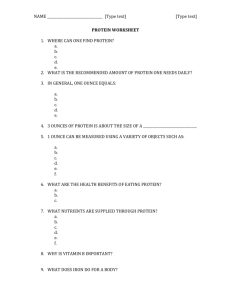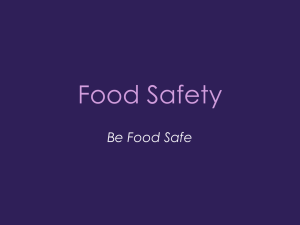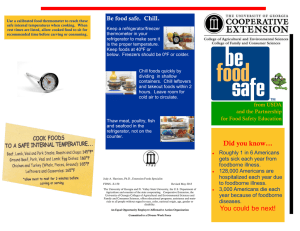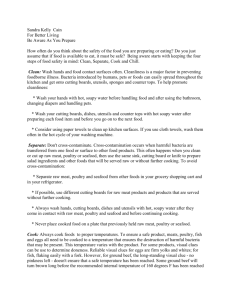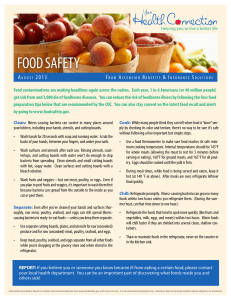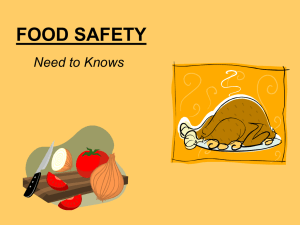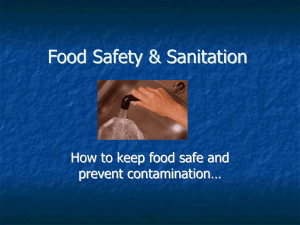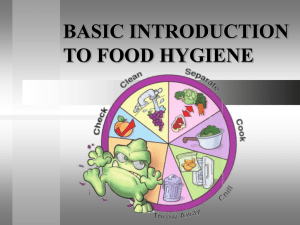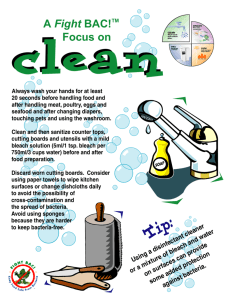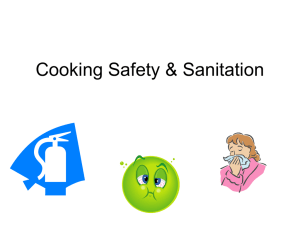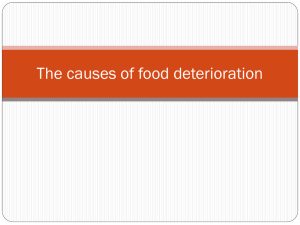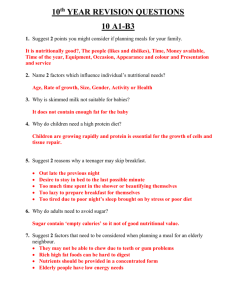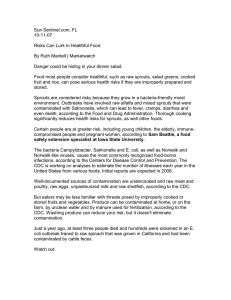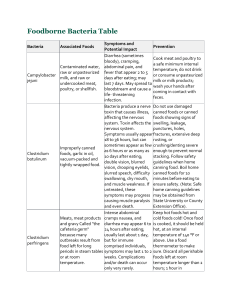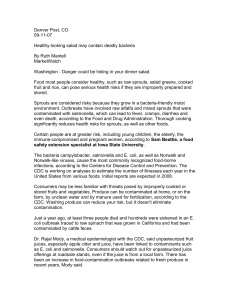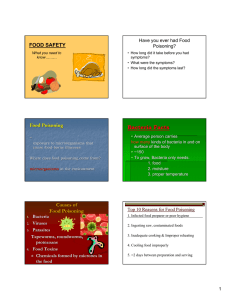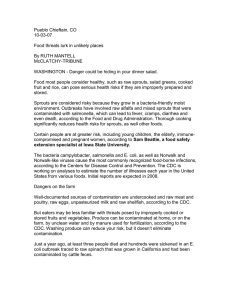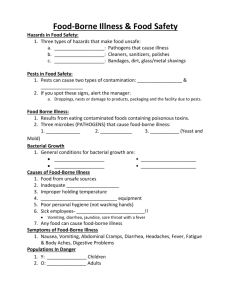Food Safety PowerPoint presentation
advertisement
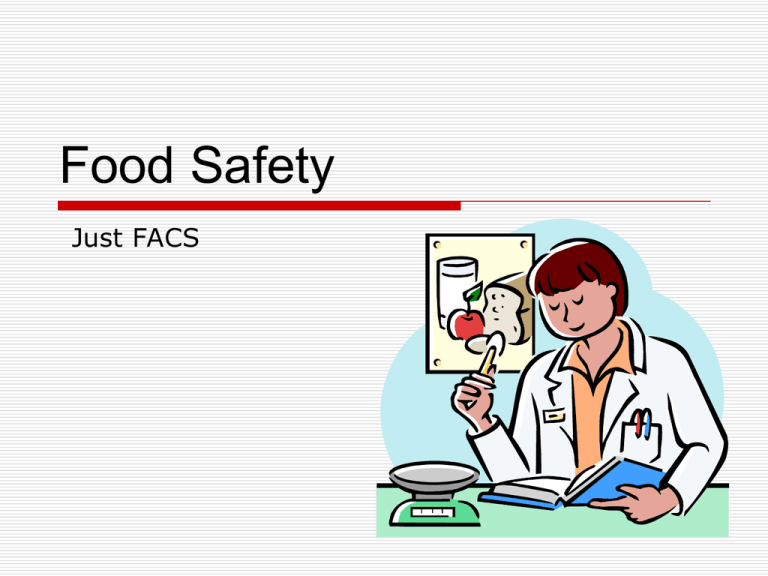
Food Safety Just FACS What is a foodborne illness? Sickness caused by eating food that contains a harmful substance. At Risk EVERYONE is potentially at risk for food-borne illness, but the following groups are at higher risk than others: Children Pregnant women Seniors Individuals with compromised immune systems Medications that weaken natural immunity Some Bacteria Diseases Bacteria/Disease Common Sources Campylobacteriosis Contaminated water; unpasteurized milk; undercooked meat, poultry and seafood Botulism Improperly processed, home-canned and commercially canned foods; vacuum packed or tightly wrapped foods E. coli Unchlorinated water, raw or rare ground beef; unwashed produce; unpasteurized milk Salmonella Raw or undercooked poultry, eggs, meat and seafood; unpasteurized milk Staphylococcus aureus Prepared foods left too long at room temperature. Meat, poultry, egg products and such mixtures as tuna, chicken, potato and egg salad; cream filled pastries Food Safety definition Food safety means keeping food safe to eat by following proper food handling and cooking practices. Four Steps to Food Safety Clean Separate Cook Chill Clean Personal Hygiene Wash hands in warm, soapy water 20-second scrub Wash before and after preparing food in the kitchen. Cover coughs and sneezes Kitchen Clean and sanitize all surfaces and utensils in hot, sudsy water. Change dish towels often Dispose of garbage promptly Separate Separate cooked and ready-to-eat foods from raw foods. Do not taste and cook with the same spoon. Never use the same utensil, cutting board, or plate for raw and cooked foods. This step prevents cross-contamination which occurs when harmful bacteria spread from one food to another. Cook Cooking raw meat, poultry, seafood, and eggs to a safe internal temperature can kill harmful bacteria. • Use a thermometer to check food temperatures. • Do not taste uncooked or partially cooked dishes. • Reheat foods thoroughly to 165 degrees F. Chill Do not allow foods to sit out longer than 2 hours. Divide larger amounts of food into small portions to chill faster. Refrigerators should be kept at 40 degrees Fahrenheit or below. Freezers should be kept at 0 degrees or below Thaw foods in refrigerator, cold water or the refrigerator When in doubt “Throw it Out!” Poster Activity Create a poster demonstrating ways to safeguard food in the kitchen. Use drawings or cut outs from magazines.
